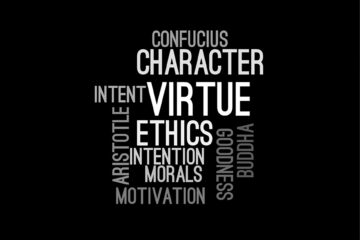![]()
Introduction
The Common Law is a body of law derived from judicial decisions, also referred to as case law. From the beginning of time, common law has been derived from universal consent and popular practice. It is a jurisprudence system that has its origins in England. It refers to a set of legal rules that derive their authority from statements of principles found in court decisions. Tradition, custom, and usage, as well as fundamental principles and modes of reasoning, are all part of the common law system. It is the embodiment of a set of unwritten principles derived from natural reasoning and a sense of fairness. To determine the appropriate law in a given situation, this system necessitates several stages of research and analysis. The common law differs from codified law in that it comes after the judgment, whereas codified law comes first. As a result, it is correct to say that it is a set of rules and declarations of principles from which judicial concepts and definitions are derived. If a similar dispute has been resolved previously, the Court is obligated to follow the reasoning used in the previous decision. In other words, it is created by judges through decisions made by courts and other similar tribunals, which are referred to as case laws. It gives common law precedent weight, based on the principle that treating similar facts differently on different occasions is unfair.
The precedent is also known as “common law,” and it governs future decisions. When parties disagree about the law in the future, the common law court will look to previous decisions of the relevant Courts. The doctrine of stare decisis states that if a similar dispute or case has been resolved in the past, the Court is bound to follow the reasoning used in the previous decision. If the Court notices that the current dispute differs from previous case decisions, the judges have the authority and responsibility to make law by setting a new precedent. The Court’s new decision becomes precedent, and it will bind future courts as well. However, in many cases, the development of the common law is now only of historical interest. However, while the basic principle has been preserved, legislative changes have been made that have altered the outcomes of numerous landmark cases.
History of Common Law
Common Law was first used in the 12th century, during the reign of King “Henry II” of England. The ruler established tribunals in order to establish a uniform system for deciding legal matters. As a result of these decisions, England now has a unified “common” law. The precedent set by the courts in the twelfth and thirteenth centuries was known as a “common law” system because it was often based on tradition and custom. In the United States, common law dates back to the arrival of the colonists, who brought with them a common law system that they were already familiar with. They adopted the American system, and the newly formed states developed their own common law systems that were distinct from federal law. In India, common law has been applied to a wide range of issues. It has been ingrained in the Indian legal system by the English for over two centuries, to the point where Indian jurisprudence lacks a distinct identity. As a result, common law has been applied in a different format than that of England, owing to the fact that the needs and demands of Indian society differed from those of the English. It has been discovered that much of the law compiled in today’s codes was primarily derived from Common Law principles. The Indian Penal Code, 1860, the Indian Evidence Act, 1872, the Code of Criminal Procedure, 1973, and the Code of Civil Procedure, 1908 are the basic statutes that govern Civil and Criminal justice. One thing to note about these laws is that they have withstood the test of time with only minor changes.
The codification of laws ensured that the law was consistent across the country and sparked a sense of legal unity in the fundamental laws. The Codes apply uniformly across the country. Another contribution of the adversarial system of trial is the Indian legal system, which is based on Common Law. The accused person is presumed innocent in this system, and the prosecution has the burden of proving his guilt beyond a reasonable doubt. The accused has the right to remain silent and cannot be compelled to respond. The truth is supposed to emerge from the prosecution’s and defense’s respective versions of the facts presented before a neutral judge. Both parties have the right to question their witnesses, and the opposing side has the right to question them in order to test their testimony. The judge acts as an arbiter, determining whether the prosecution has proven its case beyond a reasonable doubt and granting the accused the benefit of the doubt. His ultimate responsibility is to render a decision in the case.
Common Law & Rule of Law
India adopted the Common Law system of justice, which is based on the Rule of Law and has its origins in British jurisprudence. Dicey famously claimed that the Englishman does not require Administrative law or any other form of written law to keep checks on the government, but that the Rule of Law and natural law are sufficient to ensure that executive arbitrariness is avoided. While India accepts and adheres to the concept of natural law, formal and written laws are in place to ensure compliance.
India’s Constitution intended for the country to be governed by the rule of law. It states that the constitution is the supreme power in the land, and that the legislative and executive branches derive their authority from it. Article 13 (1)[1] stipulates that any law passed by the legislature must be in accordance with the Constitution, failing which it will be declared invalid . Article 21[2] adds to the protection against arbitrary executive action by stating that no one shall be deprived of his or her life or liberty unless the procedure established by law is followed.
Article 14[3] ensures that all citizens are treated equally and that no one is discriminated against on the basis of sex, religion, race, or place of birth. Finally, it ensures that the executive and legislative branches of government have no influence over the judiciary. The constitution meets all of Dicey’s requirements for being recognized as a country that follows the Rule of Law using these methods.
A few examples of how our judicial system has upheld the rule of law and ensured justice include the creation of new avenues for seeking remedies for human rights violations through PIL petitions and the promotion of genuine judicial interventions in areas such as bonded and child labour, prostitution, and a clean and healthy environment, among others.
“In our constitutional system, the central and most characteristic feature is the concept of rule of law, which means, in the present context, the authority of law courts to test all administrative action by the standard of legality,” the supreme court stated in Chief Settlement Commr; Punjab v. Om Prakash.[4]If the aggrieved person brings the matter to the attention of the court, the administrative or executive action that does not meet the standard will be reversed.”
The definition of rule of law has been greatly expanded in India. It is regarded as a part of the Constitution’s fundamental structure, and as such, it cannot be repealed by Parliament. The preamble enshrined the constitution’s ideals of liberty, equality, and fraternity. The Constitution is the supreme law of the land, and all laws should be enacted in accordance with it. Any violation of the law renders it ultra vires. The Supreme Court enunciated the rule of law as one of the most important aspects of the doctrine of basic structure in Kesavananda Bharati vs. State of Kerala (1973).[5]
The above mentioned cases clearly shows that the common law model has been successful enhanced and even maintained the rule of law in a developing country like India. It has also been seen that if rule of law is followed in a true sense in a country like India then the essence of democracy will be preserved. The adoption of common law model is therefore necessary in a developing country to ensure the application of Rule of law as it helps to govern the country.
Common Law & Liberalization of Economies
The process of economic liberalisation in India began in 1991 with the goal of introducing new neoliberal policies such as opening international trade and investment, deregulation, privatisation, tax reforms, and inflation-controlling measures, but the overall direction of liberalisation has remained consistent over the years, regardless of the ruling party. The liberalisation of the Indian economy has continued unabated since the 1991 economic reforms, with the exception of a few persistent questions about the government’s control over the exercise of power and citizens’ rights.
The petitioners in Shri Sitaram Sugar Company Ltd v. Union of India[6] were owners of sugar mills operating in the state of Uttar Pradesh in areas classified as West and East Zones for the purpose of determining the price of levy sugar. They challenged the validity of notifications issued by the Central Government on November 28, 1974, and July 11, 1975, in the exercise of its power under Subsection (3-C) of Section 3 of the Essential Commodities Act, 1955. The Central Government set the levy sugar prices for 1974-75 production through the contested orders.
Prices were calculated using geographical-cum-agro-economic factors as well as the average cost profiles of factories in their respective zones. The Supreme Court considered the nature, scope, and extent of judicial review of administrative actions forming economic policies regarding sugar price fixing. The opportunity to understand and delve deeply into the state’s policies in any field is provided by judicial review of the government’s economic policies. This assists in the proper application of laws and policy provisions in a real-life situation.
Agricultural Market Committee v. Shalimar Chemical Works Ltd[7]. The facts of the case are that the Agricultural Market Committee (for short, “the Committee”), which is the appellant before us, is a statutory body established under the Andhra Pradesh (Agricultural Produce and Livestock) Markets Act, 1966, and the respondent is a licenced trader dealing in “Copra” (dried coconut kernel) that it imports from various locations in Kerala for the purpose of coconut manufacturing.
The delegation of power to the legislature in terms of deciding economic issues related to government policies is primarily concerned with the public’s reaction to such a move. This transfer of power creates a belief in the minds of the people that they will not be duped and that the judiciary will ensure that the rights granted to them will not be violated. As a result, human rights are protected in the event of a financial crisis.
The Indian judiciary by applying common law has consistently upheld the Government of India’s economic and industrial policies in its rulings. Investors have resorted to filing appropriate legal proceedings, including writ petitions in the High Courts, in the event of any mala fides, arbitrariness, or gross illegality in any decision or order concerning FDI policy issued by the Government, as evidenced by an analysis of these decisions. It is hoped that some of the legal ambiguities that arise in the interpretation of the FDI policy and the FEMA can and will be resolved by a proper, just, and fair interpretation and adjudication by Indian courts and the common law model
Analysis Common Law Model w.r.t. Rule of Law and Liberalization of Economies
Common law is distinguished by the fact that it represents the law of the courts as expressed in judicial decisions. In contrast to the civil law system, which is based on statutes and prescribed texts, judges decide cases based on precedents provided by previous decisions. Trial by jury and the doctrine of the supremacy of the law are two other features of common law, in addition to the system of judicial precedents. Originally, supremacy of the law meant that no one was above the law, but it now means that government agencies’ actions are scrutinised in ordinary legal proceedings. The doctrine of stare decisis gives judicial precedents their weight. For example, previous decisions of the jurisdiction’s highest court are binding on all subordinate courts. However, different circumstances quickly render most decisions inapplicable except as a basis for analogy, and a court must frequently look to the rest of the English-speaking world’s judicial experience. This gives the system more flexibility, while the widespread acceptance of certain authoritative materials offers it a little stability. However, there are times when the courts fail to keep up with social changes, and it becomes necessary to legislate to effect the necessary changes. Indeed, much common law has been superseded by statutes in recent years, particularly in the fields of commercial, administrative, and criminal law. In most cases, however, courts use common law doctrines to interpret statutes. As a result, increased legislation has curtailed, but not eliminated, judicial supremacy.
The purpose of equity is to correct common law flaws and lessen their severity. Unlike common law, it can be applied to all classes of people. In common law, the law was very technical, and if the formalities were incorrect, the person making the claim would lose the case. In this instance, equity favors the claimants. Damages, an order that the defendant pay a sum of money to the claimant as compensation was the only remedy available under common law. The chancellor also devised new remedies that were more effective than the common law remedy of damages in compensating the appellatives. Injunctions, specific performance, rescission, and rectification were the most common equitable remedies. Equity is not a complete legal system; it merely fills in the gaps left by common law and softens its strict rules. It’s more convenient to follow this process through because these decisions are based on previous judgments. People are aware of what to expect, and there is a degree of predictability as there are no fixed, lengthy rules, but rather real-life situations that have already been resolved, the process is simpler and more practical. The judicial process becomes much faster because there is already a foundation on which the judgement will be passed, a basic framework in a sense. In comparison to what the procedure would be like in a system that did not follow the precedent-based system, the procedure is more efficient.
Furthermore, these decisions are based on precedent and thus have a more solid foundation. New rules of law will be authoritatively established from time to time to meet new circumstances and changing societal needs. The body of common law has amassed a large number of detailed rules for reference. It is much more detailed than the code of law, and it is also more practical. The rules that have been established are the result of actual difficulties, not academic speculation. As a result, it is relevant to everyday life.
Conclusion
There are drawbacks to common law that can be addressed with remedies. Because no two cases are the same in Common Law, the laws enacted by the judges do not have to be a perfect match with the facts of the case. England is where the Common Law system got its start. It began because judges created case laws rather than applying general statements of principle because there were different situations for different cases. However, some flaws in the system were discovered. It is rigid and inflexible because once case decisions are made, they must be followed exactly as written and no changes can be made. Long records must be kept, and uniformity is required in order to access previous cases. Nothing is codified in the same way that the other laws are. This system, along with jury trials, is popular in other countries. The concept of equity of law was created to address the flaws in the Common Law system. In addition, common law can lead to judicial overreach, which can be avoided. The body of previous Common Law was created to bind judges in order to ensure consistency and uniformity in deciding case judgments, but it became rigid as a result of this as the needs and demands of Indian society differed from those of English society, Common Law was applied in a different format here than it was in England.
References:
[1] The Indian Constitution, 1950.
[2] The Indian Constitution, 1950.
[3] The Indian Constitution, 1950.
[4] Chief Settlement Commr; Punjab v. Om Prakash 1969 AIR 33
[5] Kesava Nanda Bharti Case Vs State Of Kerala, AIR 1973 SC 1461
[6] Agricultural Market Committee v. Shalimar Chemical Works Ltd AIR 1990 SC 1277
[7] Agricultural Market Committee v. Shalimar Chemical Works Ltd AIR 1997 SC 2502



0 Comments